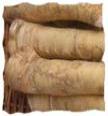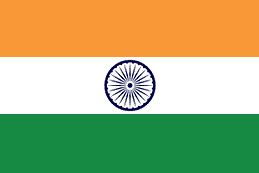Horseradish

Horseradish
Botanical Name
Armoracia rusticanaFamily
BrassicaceaeCommercial Part
RhizomeDescription
Horseradish is a hardy herb having large leaves, perennial and is grown for its pungent root, which contain oil with strong pungent odour and hot, biting taste. The plant attains a height of 0.6 to 0.9 mtr when in flower. Propagation is by planting pieces of side roots. The roots develop entirely underground and grow to a meter in length. The top of the plant consists of a rosette of large paddle-shape leaf and a flower stalk. It rarely produces seeds. White flowers with a sweet honey scent are produced on terminal panicles in late spring. There are two types of horseradish one is ‘common type’ with broad crinkled leaves and roots of high quality and the other is ‘bohemian type’ with narrow leaves and poor quality roots. The taproot is tuberous and cylindrical (30 cm long and 18 mm in diameter).
Origin and Distribution
Horseradish is a native of the marshy districts of Eastern Europe, Southern Russia and Eastern Ukraine but has become naturalized in North America and New Zealand. In India it is found growing to a small extent in gardens in North India and hill stations of South India.
Uses
Horseradish is used as an appetizing spice. The high Vitamin ‘C’ content present in it is credited with digestive and anti-scorbutic properties. Leaves are used in salads and sandwiches. Grated roots when mixed with vinegar and salt is an appetizing spice and a pungent condiment to enhance the flavour of boiled or roasted beef. Other products in use are horseradish cream, sauce, or relish. Horse raddish is available in dehydrated form also. Horseradish is a stimulant, diaphoretic, diuretic, and digestive. It is used in the treatment for general debility, arthritis, gout, respirative infections, urinary infections and fevers.
Indian Name of Spices
Hindi : Sahijan
Foreign Name of Spices
Arabic : Fajl haar Chinese : Laaht gan,La gen Dutch : Kreno French : Raifort,Cran German : Kren Greek : Armorakia Italian : Barbaforte Thai : Hosraedich







